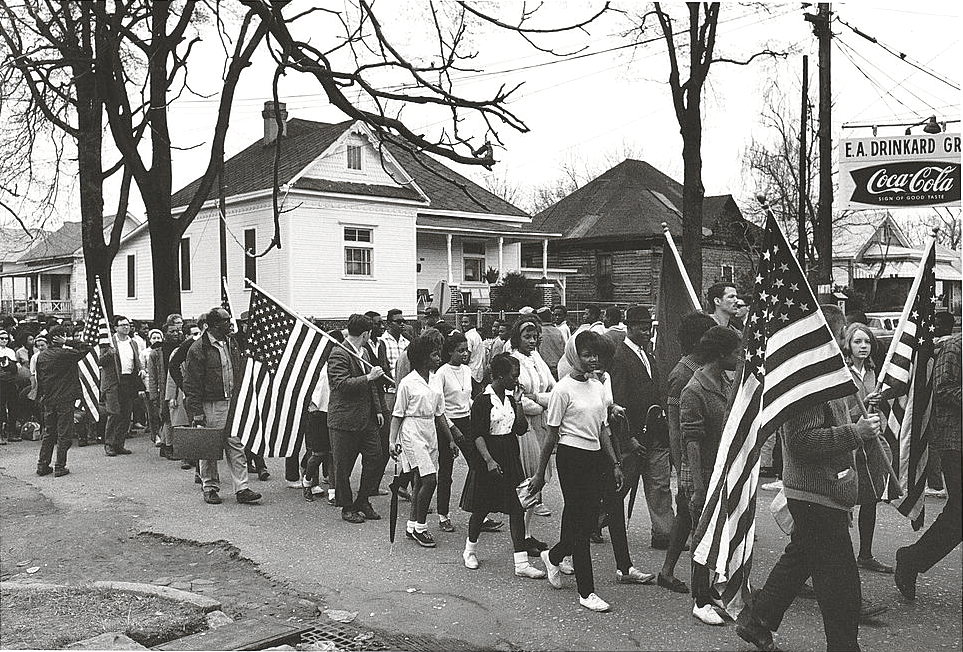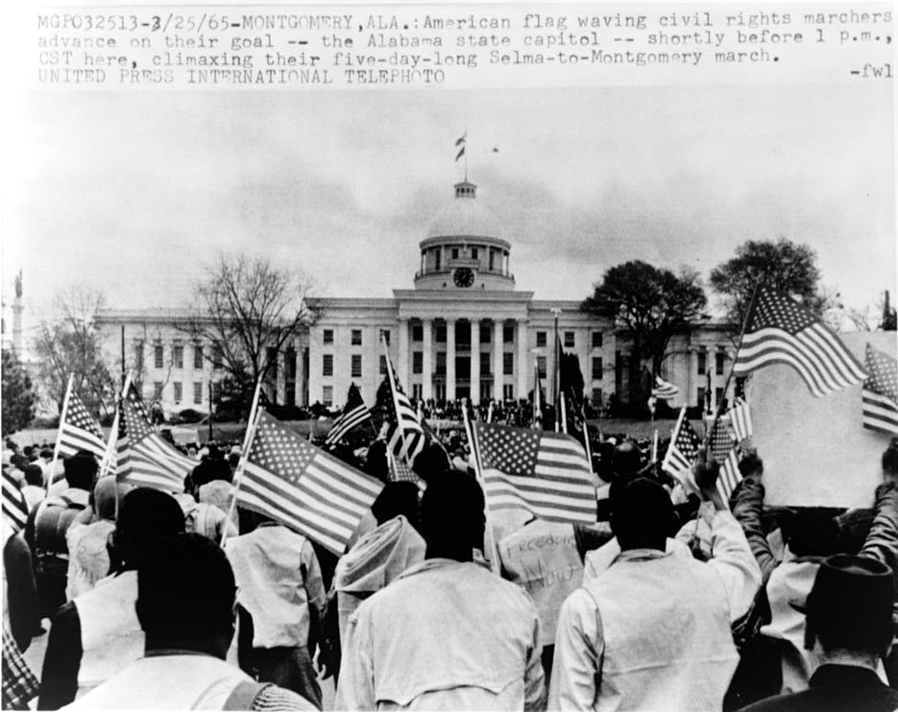|
The push
for black voting rights
The Civil Rights Act of 1964 ended segregation, but one big issue still remained: voting rights for African Americans. In parts of the South and some other states, local election officials often used fraud to keep black citizens from registering to vote. For example, some states had laws requiring voters to prove they could read. Blacks might be given a "literacy test" that was almost impossible to pass. Whites would be given an easy page to read, or no test at all. In 1965 the issue led to one of the most famous protest marches of that time. A large group of African Americans set out on foot from Selma, Alabama, heading for the State Capitol building in Montgomery - 54 miles away. The five day march, they hoped, would bring the nation's attention to their demands for voting rights. |

|
President Lyndon Johnson helped the marchers Violence by Alabama police who wanted to stop the march forced it to end almost as soon as it started. One marcher died from his injuries. President Lyndon Johnson saw the news reports of the incident, and decided to take action. President Johnson sent in government officials and military guards to protect the marchers. The march from Selma to Montgomery began again two weeks later. President Johnson also called on Congress to act as quickly as possible to create a new law to protect black voting rights. |
|
They
made it, with flags held high
The photo below shows the marchers at the State Capitol building in Montgomery, Alabama. By that time the marchers were front page news all over the country, and had won widespread support of Americans of all races for their cause. |

|
The
Voting Rights Act of 1965
Later that year, Congress passed the Voting Rights Act of 1965. The law makes it illegal for states or election officials to use unfair requirements - such as literacy tests - to stop any citizen from registering to vote. The photo below shows President Johnson and Rev. Martin Luther King, Jr., at the official signing ceremony. President Johnson gave the pen he used to Rev. King, in recognition of his role in the Civil Rights Movement. |

The photos are from the Library of Congress.
Some have been edited or resized for this page.
|
Copyright Notice
Copyright 2010, 2017 by David Burns. All rights reserved. As a guide to the Virginia Standards of Learning, some pages necessarily include phrases or sentences from that document, which is available online from the Virginia Department of Education. The author's copyright extends to the original text and graphics, unique design and layout, and related material. |